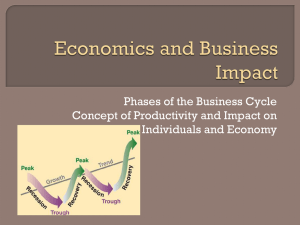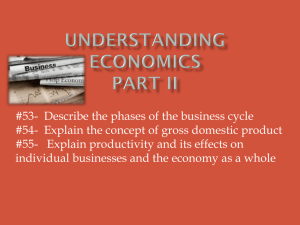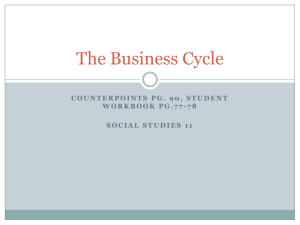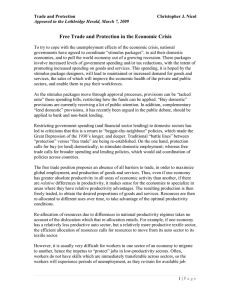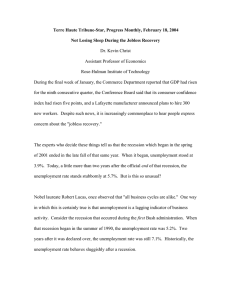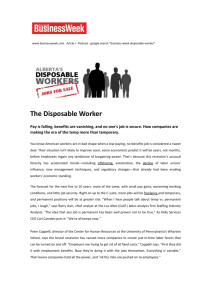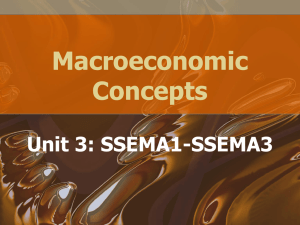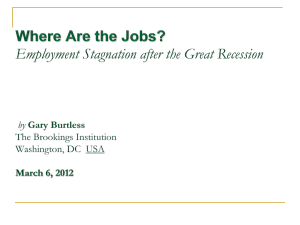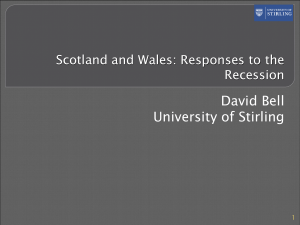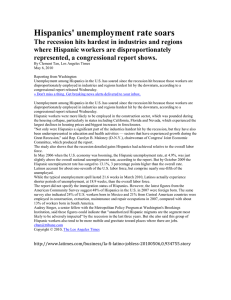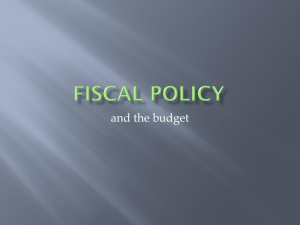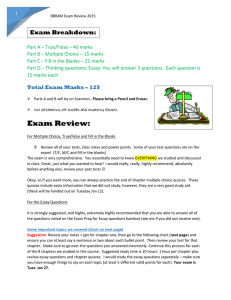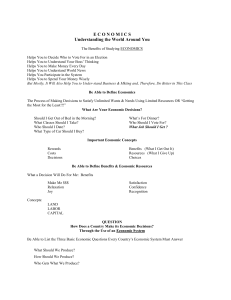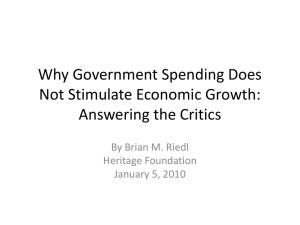Chapter 4 Questions
advertisement
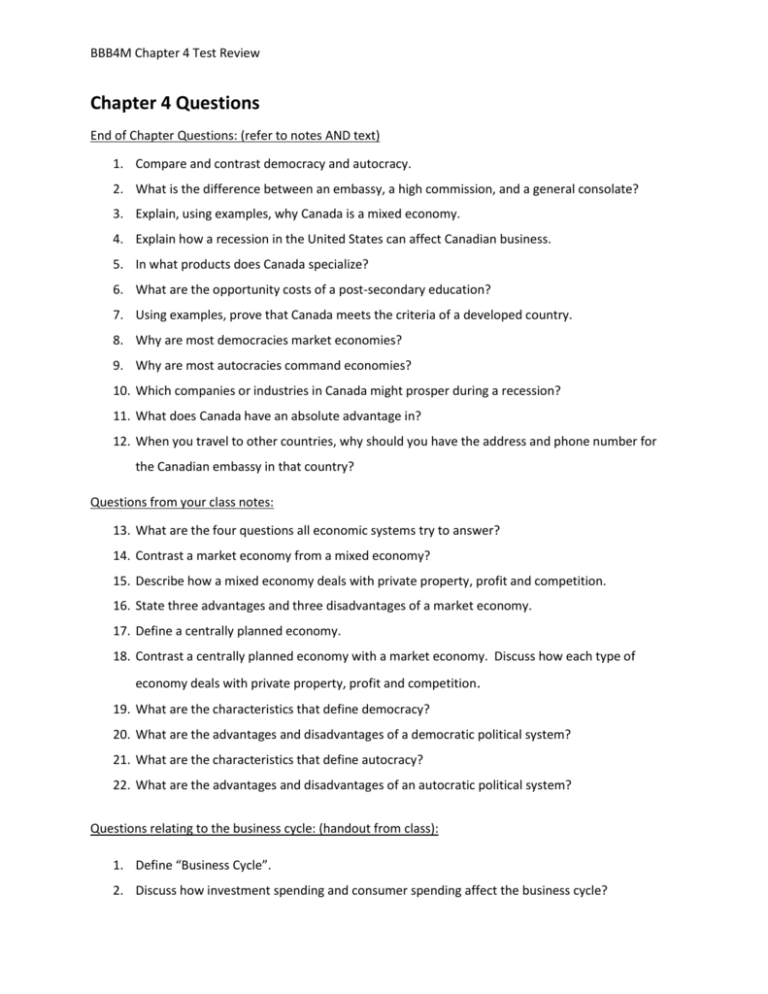
BBB4M Chapter 4 Test Review Chapter 4 Questions End of Chapter Questions: (refer to notes AND text) 1. Compare and contrast democracy and autocracy. 2. What is the difference between an embassy, a high commission, and a general consolate? 3. Explain, using examples, why Canada is a mixed economy. 4. Explain how a recession in the United States can affect Canadian business. 5. In what products does Canada specialize? 6. What are the opportunity costs of a post-secondary education? 7. Using examples, prove that Canada meets the criteria of a developed country. 8. Why are most democracies market economies? 9. Why are most autocracies command economies? 10. Which companies or industries in Canada might prosper during a recession? 11. What does Canada have an absolute advantage in? 12. When you travel to other countries, why should you have the address and phone number for the Canadian embassy in that country? Questions from your class notes: 13. What are the four questions all economic systems try to answer? 14. Contrast a market economy from a mixed economy? 15. Describe how a mixed economy deals with private property, profit and competition. 16. State three advantages and three disadvantages of a market economy. 17. Define a centrally planned economy. 18. Contrast a centrally planned economy with a market economy. Discuss how each type of economy deals with private property, profit and competition. 19. What are the characteristics that define democracy? 20. What are the advantages and disadvantages of a democratic political system? 21. What are the characteristics that define autocracy? 22. What are the advantages and disadvantages of an autocratic political system? Questions relating to the business cycle: (handout from class): 1. Define “Business Cycle”. 2. Discuss how investment spending and consumer spending affect the business cycle? BBB4M Chapter 4 Test Review 3. What is disposable income? Discuss how disposable income affects the business cycle. 4. How does world wide spending (exports – imports) affect the business cycle). 5. Draw a typical business cycle labelling each of the Trough, Expansion, Peak, and Contractionary Phases. 6. Why do our politicians try to keep unemployment as low as possible? 7. What is the term used to describe the bottom of the business cycle? 8. What is the difference between a recession and a depression? 9. During an expansionary phase, what happens to unemployment and GDP? 10. What happens to unemployment and the growth rate during an economic contraction?


